Who doesn’t love the smell of fresh new IP addresses? Well, anyone charged with warming IP addresses for...
Email deliverability is a critical aspect of email marketing campaigns. Ensuring that your emails reach the intended recipients’ inboxes and not their spam folders is vital for the success of any email marketing strategy. But what is email deliverability and how can you conduct an email deliverability test to make improvements? In this article, we will explore the concept of email deliverability, its importance, the factors affecting it, and ways to test and improve it.
Understanding Email Deliverability
Email deliverability refers to the ability of an email to reach the recipients’ inbox successfully. It involves various factors that influence the email’s journey from the sender to the recipient, including the sending infrastructure, content, and recipient engagement.
Ensuring high email deliverability requires a holistic approach that considers not only the technical aspects of email sending but also the quality and relevance of the content being delivered. By focusing on building a positive sender reputation, crafting engaging and personalized content, and maintaining a clean email list, senders can improve their chances of reaching the coveted inbox placement.

What is Email Deliverability?
Email deliverability is determined by multiple factors, such as the sender’s reputation, email content and design, and recipient engagement. How do you measure email deliverability? It is measured by how successful emails make it to the recipient’s inbox and avoid being marked as spam or filtered out as unwanted.
Sender reputation plays a crucial role in email deliverability, as internet service providers (ISPs) use it as a key metric to determine whether an email should be delivered to the inbox, spam folder, or rejected outright. Building and maintaining a positive sender reputation involves practices like sending relevant content, honoring unsubscribe requests promptly, and regularly monitoring email engagement metrics.
Why is Email Deliverability Important?
Email deliverability is essential because it directly affects the effectiveness of your email marketing campaigns. If your emails end up in spam folders or get filtered out, your recipients will never know about your offers or messages. Thus, poor email deliverability can significantly impact your business’s reach and revenue potential.
Moreover, high email deliverability is a reflection of a sender’s credibility and trustworthiness in the eyes of both ISPs and recipients. By consistently delivering valuable and sought-after content to the inbox, senders can foster stronger relationships with their audience and improve overall engagement rates over time.
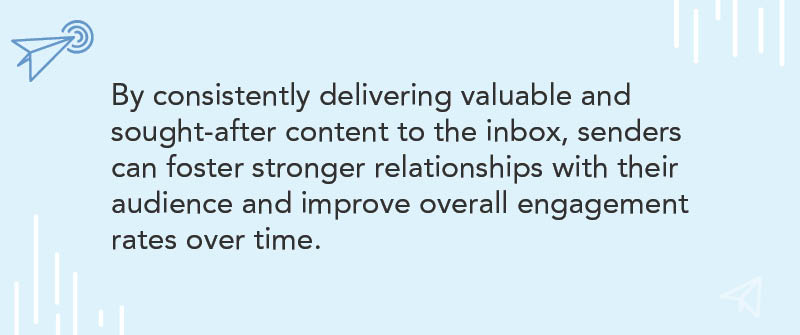
Factors Affecting Email Deliverability
Several factors influence email deliverability. It’s important to understand and address these factors to improve your chances of reaching the recipients’ inbox.
Ensuring your emails reach the intended recipients involves a multifaceted approach that goes beyond just hitting the send button. By delving deeper into the intricacies of email deliverability, you can navigate the complex landscape of digital communication with finesse.
Sender Reputation
Sender reputation plays a crucial role in email deliverability. ISPs and email service providers assess the sender’s reputation to determine whether an email should be delivered to the inbox or treated as spam. Factors that affect the sender’s reputation include the sender’s IP address, domain authentication, email volume, and complaint rates.
Establishing a positive sender reputation requires consistent sending practices and a commitment to maintaining high-quality email standards. By adhering to best practices and actively monitoring your sender’s reputation, you can enhance the deliverability of your emails and foster trust with ISPs.
Email Content and Design
The content and design of your email can impact deliverability. Emails with poor or misleading subject lines, excessive use of promotional language, or broken HTML code are more likely to be flagged as spam. To improve deliverability, it is essential to create well-designed, engaging emails with relevant and valuable content.
Crafting compelling email content that resonates with your audience is key to capturing their attention and driving engagement. From personalized messaging to visually appealing layouts, optimizing your email content and design can significantly boost deliverability rates and enhance the overall effectiveness of your email campaigns.
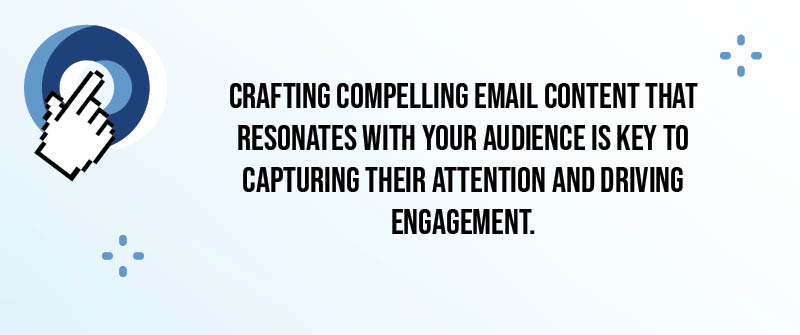
Subscriber Engagement
Recipient engagement plays a significant role in email deliverability. ISPs consider metrics such as open rates, click-through rates, and spam complaints to evaluate recipient engagement. Emails that receive high engagement are more likely to make it to the inbox, while those with low engagement might end up in the spam folder.
Nurturing subscriber engagement involves fostering meaningful interactions with your audience and delivering content that adds value to their inbox. By monitoring and analyzing engagement metrics, you can tailor your email campaigns to resonate with recipients and cultivate a loyal subscriber base that actively engages with your content.
Testing Email Deliverability
Testing email deliverability is crucial to identify any issues and make necessary improvements. There are several methods and tools available for testing email deliverability.
Ensuring that your emails reach the intended recipients’ inboxes is a top priority for any email marketer. By testing email deliverability, you can proactively address any potential issues that may hinder the successful delivery of your messages.
Pre-send Testing
Pre-send testing allows you to detect deliverability issues before sending your emails to the entire subscriber list. It involves testing your email on various email clients and devices to ensure optimal display and functionality. This helps identify any rendering problems, broken links, or coding errors that could impact deliverability.
Additionally, pre-send testing enables you to preview how your email will appear to recipients, ensuring that your message is visually appealing and effectively conveys your intended message. By conducting thorough pre-send testing, you can enhance the overall user experience and increase the likelihood of engagement with your emails.
Post-send Testing
Post-send testing involves monitoring the delivery and engagement of the emails you send. A common method of post-send testing relies on seed lists provided by third parties which will test how your email was received across different mailbox providers. Combining this information with your engagement metrics you can begin to piece together information about your email deliverability. By analyzing bounce rates, open rates, click-through rates, and spam complaints, you can evaluate the success of your email deliverability and make necessary adjustments.
Furthermore, post-send testing allows you to gather valuable data on recipient behavior and preferences. By leveraging this information, you can refine your email marketing strategies, tailor your content to better resonate with your audience, and ultimately improve the effectiveness of your email campaigns.
Tools for Testing Email Deliverability
To effectively test your email deliverability, you can utilize both in-house and third-party testing tools.
Ensuring your emails reach the intended recipients’ inboxes is crucial for the success of your email marketing campaigns. By using a combination of in-house and third-party testing tools, you can thoroughly assess and optimize your email deliverability strategies.
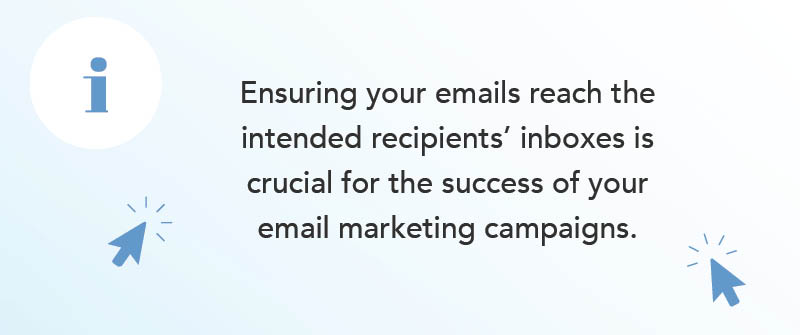
In-house Testing Tools
In-house testing tools allow you to evaluate different aspects of deliverability, such as content, design, and engagement, using your own resources. These tools include email testing platforms, analytics software, and deliverability monitoring tools that provide valuable insights into your email campaigns.
By utilizing in-house testing tools, you have the advantage of full control and customization over the testing process. You can tailor your tests to specific segments of your email list, experiment with different subject lines and content variations, and analyze the performance metrics in real time to make immediate adjustments.
Third-party Testing Tools
Third-party Deliverability testing tools offer comprehensive deliverability testing and monitoring services. They often provide sophisticated analytics, real-time reporting, and deliverability improvement suggestions. These tools can help identify and rectify any deliverability issues, enhance email engagement, and maximize inbox placement rates.
Partnering with third-party testing tools can provide an external perspective on your email deliverability performance. Third party deliverability tools primarily rely on seed lists in order to provide details back about how your email program is performing.These tools have the advantage of industry expertise, access to a wide range of email clients and spam filters for testing, and the ability to benchmark your results against industry standards to drive continuous improvement.
Improving Email Deliverability
Once you have tested your email deliverability and identified areas for improvement, it’s essential to take the necessary measures to enhance your deliverability rates.
Enhancing email deliverability is an ongoing process that requires attention to detail and adherence to best practices in email marketing. By continuously monitoring and optimizing your email campaigns, you can ensure that your messages reach the intended recipients’ inboxes.
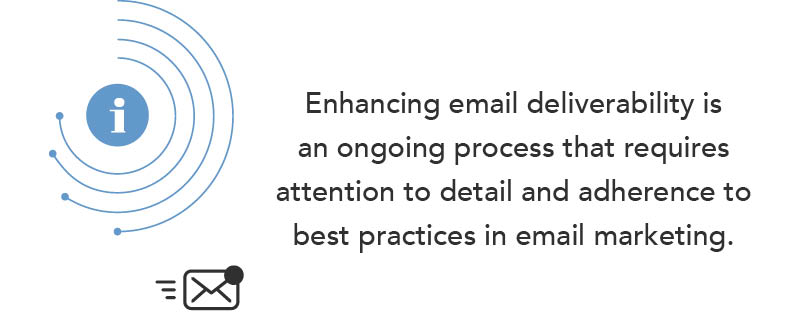
Best Practices for High Deliverability
Implementing best practices can significantly improve your email deliverability. These practices include maintaining a clean email list, using double opt-in for subscribers, personalizing your emails, avoiding excessive use of promotional language and spam triggers, and optimizing your email content for different devices and email clients.
Furthermore, segmenting your email list based on user behavior and preferences can help increase engagement and deliverability. By sending targeted and relevant content to specific segments of your audience, you can improve open rates and reduce the likelihood of your emails being marked as spam.
Avoiding Common Mistakes, Avoid the Spam Folder
There are common mistakes that can negatively impact email deliverability. These include purchasing email lists, sending emails with untraceable origins, failing to honor unsubscribe requests promptly, and neglecting to monitor and improve engagement rates. Avoiding these mistakes helps maintain a positive sender reputation and improve deliverability.
In addition to avoiding these pitfalls, regularly monitoring your email performance metrics, such as open rates, click-through rates, and spam complaints, is crucial for identifying areas that need improvement. By analyzing these metrics and making data-driven decisions, you can fine-tune your email campaigns for optimal deliverability and engagement.
The Impact of Poor Email Deliverability
Poor email deliverability can have severe consequences for your business and customer relationships.
Ensuring that your emails reach the intended recipients is vital for the success of your marketing campaigns. Poor email deliverability can stem from various factors, including sender reputation, email content, and recipient engagement. It is essential to monitor and improve these aspects to enhance the chances of your emails landing in the inbox rather than the spam folder.

Business Consequences
If your emails consistently end up in spam folders or fail to reach the recipients, your marketing efforts will go in vain. You may experience a decline in open rates, click-through rates, and conversions, ultimately affecting your revenue and business growth.
Moreover, poor email deliverability can harm your brand’s reputation and credibility. When customers repeatedly do not receive your emails, they may start associating your brand with unreliability, leading to a loss of trust and loyalty.
Customer Relationship Consequences
Delivering emails to the recipient’s inbox is crucial for building and maintaining customer relationships. When emails are not delivered, customers may perceive your brand as untrustworthy, miss out on important information or offers, and lose interest in engaging with your business.
Furthermore, poor email deliverability can result in missed opportunities for personalized communication with customers. Tailoring emails based on customer preferences and behaviors becomes ineffective if the emails do not reach the intended audience. This lack of personalization can diminish the overall customer experience and hinder long-term relationships.
In conclusion, testing email deliverability is crucial for the success of your email marketing campaigns. By understanding the concept of email deliverability, addressing factors that affect it, and utilizing testing tools, you can improve your email delivery rates and maximize the impact of your marketing efforts. Remember to implement best practices, avoid common mistakes, and prioritize customer relationships to enhance your email deliverability and achieve better business results.
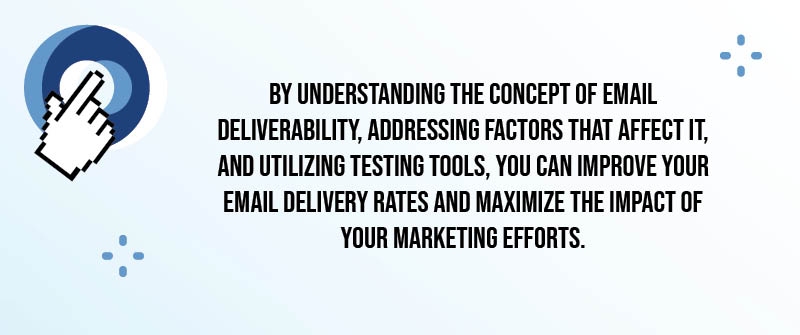
How Audience Point Can Help You with Their Suite of Email Deliverability Tools
AudiencePoint has a different approach to deliverability monitoring. Rather than relying on outdated seed lists, our inbox monitoring tools allow you to see if your subscribers are actually receiving email in their inbox. Paired with our email engagement scores you can quickly quash deliverability issues before they have the chance to tank your marketing efforts. Contact Audience Point today!



